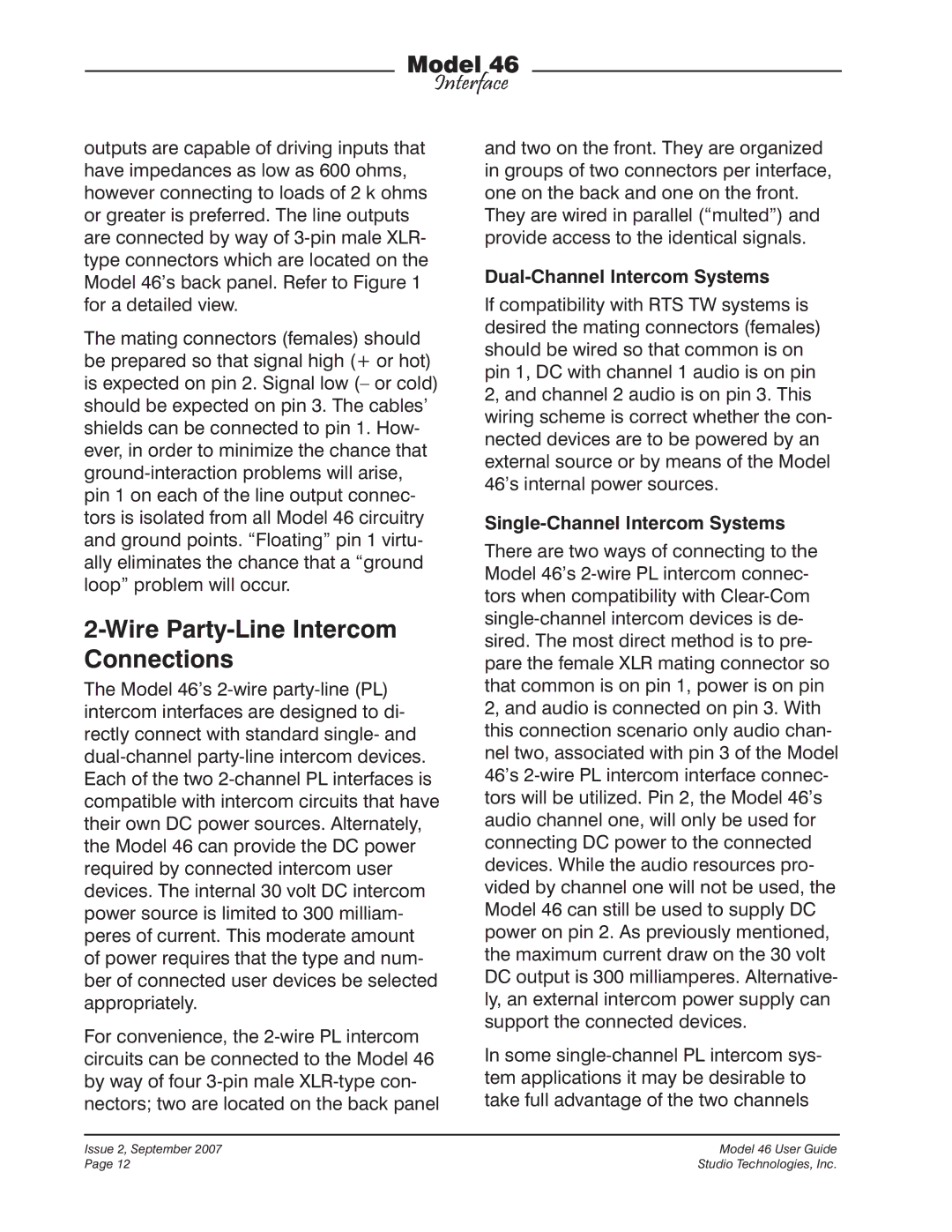outputs are capable of driving inputs that have impedances as low as 600 ohms, however connecting to loads of 2 k ohms or greater is preferred. The line outputs are connected by way of 3-pin male XLR- type connectors which are located on the Model 46’s back panel. Refer to Figure 1 for a detailed view.
The mating connectors (females) should be prepared so that signal high (+ or hot) is expected on pin 2. Signal low (– or cold) should be expected on pin 3. The cables’ shields can be connected to pin 1. How- ever, in order to minimize the chance that ground-interaction problems will arise, pin 1 on each of the line output connec- tors is isolated from all Model 46 circuitry and ground points. “Floating” pin 1 virtu- ally eliminates the chance that a “ground loop” problem will occur.
2-Wire Party-Line Intercom Connections
The Model 46’s 2-wire party-line (PL) intercom interfaces are designed to di- rectly connect with standard single- and dual-channel party-line intercom devices. Each of the two 2-channel PL interfaces is compatible with intercom circuits that have their own DC power sources. Alternately, the Model 46 can provide the DC power required by connected intercom user devices. The internal 30 volt DC intercom power source is limited to 300 milliam- peres of current. This moderate amount of power requires that the type and num- ber of connected user devices be selected appropriately.
For convenience, the 2-wire PL intercom circuits can be connected to the Model 46 by way of four 3-pin male XLR-type con- nectors; two are located on the back panel
and two on the front. They are organized in groups of two connectors per interface, one on the back and one on the front.
They are wired in parallel (“multed”) and provide access to the identical signals.
Dual-Channel Intercom Systems
If compatibility with RTS TW systems is desired the mating connectors (females) should be wired so that common is on pin 1, DC with channel 1 audio is on pin 2, and channel 2 audio is on pin 3. This wiring scheme is correct whether the con- nected devices are to be powered by an external source or by means of the Model 46’s internal power sources.
Single-Channel Intercom Systems
There are two ways of connecting to the Model 46’s 2-wire PL intercom connec- tors when compatibility with Clear-Com single-channel intercom devices is de- sired. The most direct method is to pre- pare the female XLR mating connector so that common is on pin 1, power is on pin 2, and audio is connected on pin 3. With this connection scenario only audio chan- nel two, associated with pin 3 of the Model 46’s 2-wire PL intercom interface connec- tors will be utilized. Pin 2, the Model 46’s audio channel one, will only be used for connecting DC power to the connected devices. While the audio resources pro- vided by channel one will not be used, the Model 46 can still be used to supply DC power on pin 2. As previously mentioned, the maximum current draw on the 30 volt DC output is 300 milliamperes. Alternative- ly, an external intercom power supply can support the connected devices.
In some single-channel PL intercom sys- tem applications it may be desirable to take full advantage of the two channels

